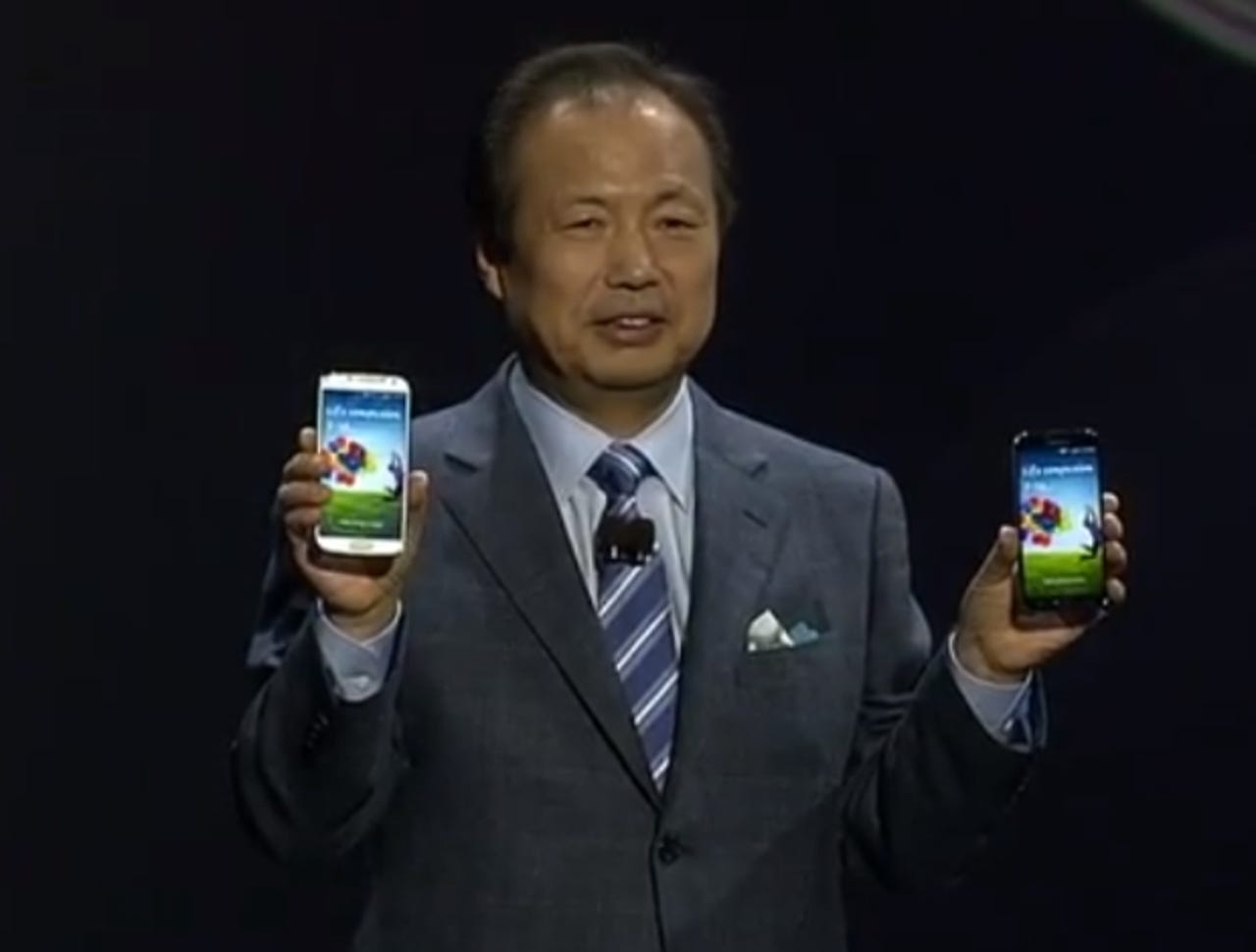Samsung's Galaxy S4 focuses on differentiation but reveals growing problem for handset makers

The launch of the Samsung Galaxy S4 in New York on Thursday represented the South Korean manufacturer’s most concerted push to secure a number one spot in the hands and pockets of both consumer and enterprise buyers but it could also spell growing problems for manufacturers.

A premium, established brand like Samsung's 'hero' Galaxy devices will invariably deliver a premium experience over a more modestly specced handset, and the S4 is expected to be no different.
Alongside its incremental bump in screen size to 5-inches, which puts it right on the edge of the phone category, and a jump to a 1080P display resolution, there are more significant improvements to the camera and processor.
Instead of the 1.4GHz quad-core processor in the S3, there is now either an octo-core clocked at 1.6GHz or a quad-core 1.9GHz depending on market variations. The camera is a 13-megapixel affair and can record simultaneously in conjunction with the front-facing 2-megapixel sensor.
On the design front, the S4 has stayed true to previous generations of Samsung's Galaxy and Note ranges. While Galaxy fans will likely be happy that the S4 has taken design cues from the S3, it could begin to wear thin if Samsung doesn't break the mould eventually.
While this could seem of little concern at the launch of another flagship handset and new addition to Samsung's stables, the overall design choices taken for the S4 could illustrate a growing trend, and growing problem, for smartphone makers. And this is where Samsung has focused.
With increasing handset size, the possibility of one-handed use and the line between what defines a tablet or a phone (or even a phablet) becomes narrower, making it harder for manufacturers to stand out on hardware alone in an already crowded marketplace.
"Going over 5-inches in an elegant way gets harder, and you have a compromised experience [as a phone] as the device goes from one hand to two hand-operation," Carolina Milanesi, research vice president of Consumer Technologies and Markets, told ZDNet.
"The bigger question is what are vendors are to do when they cannot go any larger, as this trend started more as a way to differentiate than as a real need from consumers," Milanesi added.
Samsung is as aware of this as its rivals and, like others, looks to differentiate through the software it adds to Android, and the S4 is no different.
Where the S3 introduced Smart Stay, the S4 brings with it Smart Pause, Smart Scroll and Air View. The first two of these use eye detection to perform an action, specifically, pause a video or scroll up or down a web page, while Air View allows you to preview content, navigate the phone or browse the web by hovering a finger over the screen, but not touching it.
There are also new native apps like S Translator for translating different spoken languages on the fly and S Voice Drive for use when driving.
Innovation or gimmicks?
However, Samsung can introduce all the software features it wants, if they don't work reliably they will ultimately fade into obscurity.
"Samsung’s latest eye tracking feature will go a long way to establishing Samsung's image as a serious software player, however, like all innovation, it will be interesting to watch the consumer response," Fred Huet, managing partner of Greenwich Consulting, said in a statement.
"The Smart Stay feature on the Galaxy S3 received a mixed response largely due to its inconsistent performance and feature limitations. The expected software upgrade certainly holds much promise but in order to really benefit the user it must consistently aid the smartphone experience, or else risk becoming an expensive gimmick," he added.
Grand ambitions
While wooing consumers' minds with features such as these is obviously high on the S4's priorities, Samsung also recently unveiled grand enterprise ambitions for the S4 and other Galaxy devices with the introduction of its Knox device management software.
With BlackBerry and Apple's iPhone winning and increasing amount of enterprise customers, Samsung's Knox is clearly serious about getting Android devices into businesses.
While in one sense the S4 is just another high profile handset launch, it also more importantly represents a dual-pronged assault on the consumer and enterprise markets that could well concern its rivals, particularly other Android handset makers.
But while Samsung continues to evolve its devices and its business to maximise every opportunity and efficiency, it must also be careful not to play the iteration game too long, or bank on being able to continually increase the screen size or resolution. A range-topping smartphone must be a phone, not a phablet. Ideally it should also fit in a pocket, a point not overlooked by Milanesi.
"Communication has changed and voice today is only one of the ways we communicate, so the phone as a communication device had to evolve too," she told ZDNet. "However, the pocketability of the phone remains a key to the experience we have with the device."